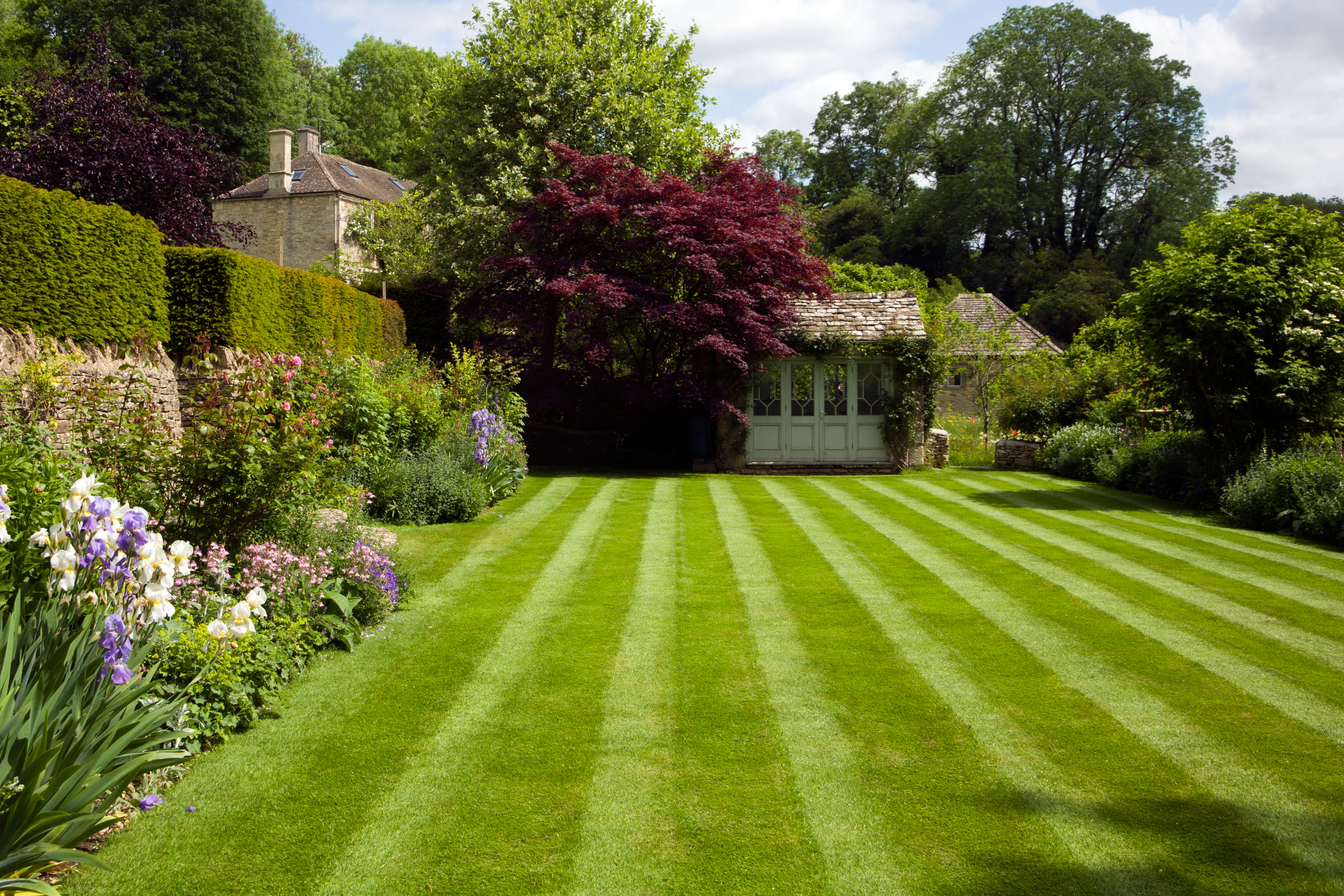How to mow stripes into a lawn – top tips for a professional finish
Expert tips for how to mow stripes into a lawn – and super-smart results


Learning how to mow stripes into a lawn will ensure your garden always looks tip-top – and it's beneficial from a health and results standpoint.
By cutting the grass into stripes with the best lawn mower available, you can make sure it's full of vitality while also being the envy of all the neighbors.
'In addition to the aesthetic benefits of a clean, elegant striped lawn this methodology can also lead to healthier grass,' says Andrew Gaumond, head horticulturist at Petal Republic.
Below, we tell you how to mow stripes into a lawn in easy steps.
How to mow stripes into a lawn
Mowing stripes into a lawn isn't just about aesthetics, but lawn health, too.
'By cutting in opposing directions you're enabling the blades to receive varying light exposure, which can promote growth and vitality in comparison to continually mowing in the same direction,' says Andrew Gaumond.
1. Invest in the right lawn mower attachments
To achieve clean and clearly defined stripes on the lawn the tools are often just as important as the technique.
Design expertise in your inbox – from inspiring decorating ideas and beautiful celebrity homes to practical gardening advice and shopping round-ups.
Andrew says: 'Many lawn mowers either have a built-in roller or attachment that helps to flatten and press the grass blades after the rotary has passed through.'
2. Cut in straight but overlapping lines
'By cutting in straight lines, and then returning in the opposing direction you'll achieve a consistent striped effect across the lawn,' says Andrew.
'You'll want to ensure each pass slightly overlaps the last which will help to accentuate the definition.'
Any tips for keeping the lines as straight as possible? Andrew comments: 'I always recommend starting from a central point in your lawn and picking two reference points at either end of the imaginary first line and working between these initially. This will produce a straight master central stripe that each additional stripe can be mown against out to the border on either side.'
He adds: 'I have also seen gardeners utilize string or rope as well to act as a guide for the first line.'
3. Create a border around irregular-shaped gardens
For lawns that are slightly irregular in shape and don't possess clean right angles throughout, Andrew advises that it's often worth starting with a clean mow around the perimeter to create a border.
'Then start the former process of cutting opposing lines from within the remaining central body of grass,' he says.
How does lawn striping work?
Lawn striping works by reflecting light in opposing directions giving the visual appearance of light and dark stripes.
Andrew explains: 'Those lines cut towards you will appear darker due to the shadow created by the bent blades, whilst those lines cut away will be lighter as they bounce the light off and away.'
Do you need a roller to mow stripes into a lawn?
'A roller is a vital tool for gardeners looking for professional looking stripes,' says Andrew Gaumond of Petal Republic. 'The key for truly distinct stripes is to be able to control and influence the bend of the individual blades of grass to enable light to refract in a particular way.'
Can I mow stripes into a lawn without a roller?
If you find your mower doesn't have a roller attachment you'll still be able to achieve a plausible result by mowing in opposing directions for each adjacent stripe.
Does blade height help when mowing stripes into a lawn?
'With proper tools, it's possible to achieve a very distinct striping effect on very short grass (less than an inch in length), though for the average home gardener with a consumer grade mower, I'd recommend taking a gradual approach to reducing length,' advises Andrew.
'You'll typically see better striping results with slightly longer grass, which will diminish with each shorter cut.'
He adds: 'Start at a medium to high setting and assess the results before committing to anything shorter initially.'

Ruth Doherty is an experienced digital writer and editor specializing in interiors, travel and lifestyle. With 20 years of writing for national sites under her belt, she’s worked for the likes of Livingetc.com, Standard, Ideal Home, Stylist and Marie Claire as well as Homes & Gardens.